There are no trifles in everything that relates to gynecological health. And one of his most important indicators is menstruation. Significantly, not only its very presence at a certain age, but also various characteristics that tell about the state of the sexual sphere. In how much blood a month a woman loses, too, there is enough information about her gynecological well-being. That's why it's so important to follow this and at the time of getting help, if something is wrong.
Than opedelyaetsya

amount of monthly Each female body - individuality in all, this applies to menstruation. Its features have a unique effect on the duration and size of menstruation. And yet there is a restrictive framework, the output of which means pathology. Know them and make sure that menstruation remains within such limits, should any woman. This is important for the timely recognition of a possible pathology and adequate treatment. What discharge during the monthly depends on:
- Heredity. All the characteristics of menstruation, including the number of discharges in her daughter, often repeat the same indicators that the mother had;
- Constitution. Fragile, subtle women, as a rule, do not suffer from intensive secretions. But there are exceptions;
- Climatic conditions. Yuzhanka's monthly offensive is met earlier than the northern women and less often they have scant excretions;
- The states of the nervous system. Women with increased anxiety can often observe violations not only of the timing of the onset of critical days, but also changes in the volume of menstrual blood;
- Features of food. The amount of excretions on critical days will necessarily be affected by a strict diet;
- The amount of fat tissue. Excess weight or, conversely, its deficiency is often of hormonal origin, so they can affect the size of menstrual flow;
- The age and period of a woman's life. There is a noticeable difference between how much blood during the menstrual period there may be in a 14-year-old girl and an adult giving birth to a woman.
Composition and number of monthly:
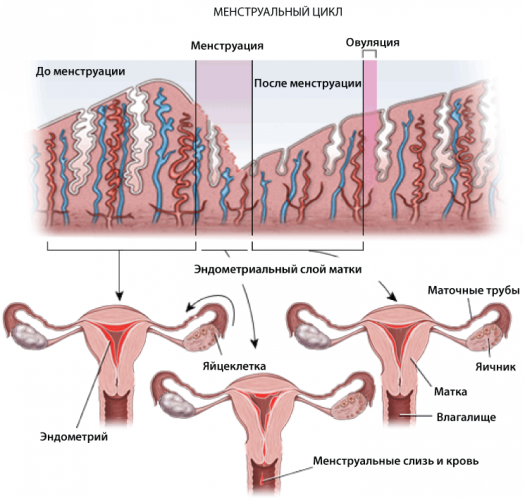
dependence Monthly excretions are the contents of the internal space of the uterus. More precisely, its cover called the endometrium. During menstruation, its outer layer is removed, which is completely renewed to its end. The first process is inevitably accompanied by rupture of small blood vessels. They constitute a significant proportion of the endometrium, because this particular organ is intended to ensure the development of the embryo after conception and its fixation in the uterus. Therefore, normally the color of discharge during the period is bleeding, that is, reddish or brownish.
They also include clear mucus, other elements from the vagina and cervix. The first, by the way, is the largest part of the menstrual fluid. The presence of other components dilutes its color and increases its volume. That is, monthly excretions are not just blood. And if they have a rich red color, and there are many of them, there is reason to suspect pathology.
Too light discharge during menstruation is also abnormal. This means that mucus and other inclusions are too large a part, hence problems with the endometrium that can lead to difficulties with conception or fetal development during pregnancy are possible.
Blood norm in discharge during menstruation
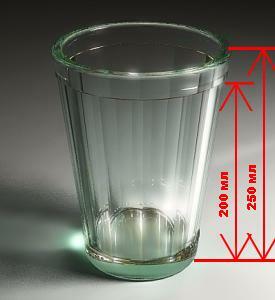
How much blood does a woman lose during menstrual periods? Again, all individually. But its volume for the body is quite impressive and amounts to 60 ml per day. This is approximately 2 tablespoons of liquid. In this case, only blood is meant. Therefore, if a woman thinks that there is more of her, it is possible that this is really just an illusion. After all, in the secretions there is also mucus, and pieces of endometrial tissue.
The amount of blood coming out on the days of the month, for their total duration, will also impress the uninformed. Its volume is 250 ml, that is, more than a glass. And for a lifetime from menarche to the onset of menopausal menopause reaches up to 90 liters. But do not be afraid of these figures. If blood loss is not higher than indicated, the body is able to fill them without harm to themselves.
How much blood you lose during menstruation, depends on their period. The beginning and end of menstruation is usually not characterized by large volumes of biological fluid. The greatest amount of blood comes out in the middle of critical days, as well as other components of excreta. Therefore, their color at this stage is brighter, more saturated than in the first and last days.
How to determine the amount of monthly
This is available through hygiene. The number of excretions can be:
- It is hardly noticeable that 1-2 drops of blood are found on a single day's laying. This corresponds to 5-6 g;
- Very easy. Hygienic means it is enough to replace 1-2 times a day, blood flows from 6 to 9 g;
- Easy when the gasket or tampon changes 3-4 times a day. A woman loses 9-12 g of biological fluid;
- Moderate. Tampons or pads of medium absorbency are soaked every 4 hours. In this case, blood goes from 12 to 15 g;
- Strong. Bulk hygiene products occur after 3-4 hours. In this case, 15-18 g of liquid flows out;
- Very strong. Super absorbent tampons or gaskets are soaked every hour or two. Here the volume of excreted secretions is not accountable, but requires medical care.
Scanty monthly
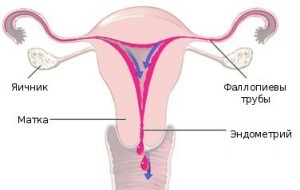
This phenomenon does not indicate a disease if present in girls in the first 2 years after menarche. The menstrual cycle and everything connected in it is still in the stage of formation, therefore the amount of excretions is not distinguished by abundance. This is due to hormonal fluctuations, a lack of progesterone. How much blood goes out during menstruation depends on the amount of the hormone. If it increases in the next cycle, the volume of selections is the same.
Lean menstruation in adult girls and women can also be one of the norm options. But still it makes sense to check and find out the concentration in the blood of estrogen. It is his deficit that is responsible for a small number of secretions. A lack of estrogen, in turn, can be caused by:
- Endocrine problems;
- Depletion or obesity;
- Malfunction of the ovaries;
- Congenital malformations of the reproductive system;
- Endometrial diseases;
- Taking hormonal contraceptives.
Decreased ovarian activity is also accompanied by a decrease in the volume of secretions. Therefore, there is a significant difference between how much blood there is with menstruation in the pre-menopausal period and in younger years in the same woman.
Abundant discharge with monthly
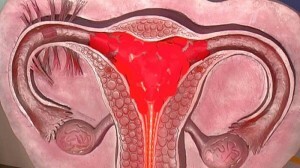
Abundant months are characterized not only by abnormal amounts of secretions, but accompanied by poor health. Often a woman can not come to her senses even after the end of menstruation, and the critical days themselves put her, exhausted, into bed. In addition, the monthly can go longer than usual and exceed a week. But even their packing in the medium time frame, that is 3-7 days, with intensive discharge is not a guarantee of norm and well-being. How much blood goes away during menstruation in such cases, the woman will find out according to the following signs:
- Pale skin is stronger than usual;
- Weaknesses, nausea;
- Lowering blood pressure.
If this continues more than one cycle and is not suppressed in any way, anemia may develop. When blood loss every month is more than 250 ml, the body can not make up for it. Hence the drop in hemoglobin, which provokes a bad state of health, not only during critical days, but also after them. How much blood with monthly in such cases is lost can be caused by several reasons.
Imbalance of hormones
If it exists in adolescence, it is likely to recover as the girl grows up. But do not wait for it, when it suffers heavily for several days every month, and it is better to adjust the amount of hormones with the help of a gynecologist appointed therapy. The same can be said about the period preceding menopause. If a woman is exhausted by heavy menstruation, you should go to the doctor before they completely stop.

Myoma of the uterus
With this disease in the body, there is a benign tumor that is fed through the blood vessels. Myoma and itself are permeated by them. Therefore, during monthly discharges and blood, the becomes significantly larger than without it. This symptom is an unconditional reason to be on the alert and go to find out the reasons for the doctor. At an early stage of the disease, fibroids can be eliminated by retaining the organ and the ability to give birth.
Cervical polyps

How much blood flows during menstruation depends on the existing polyp in one part of the uterus. This formation is more often located on the external throat, so it can be seen with gynecological examination. The cervix produces a large amount of mucus necessary for various processes. The presence of a polyp on it makes it bloody, as a result of which the menstruation becomes more intense and tiring.
Endometrial diseases
Inflammation of the organ that directly participates in the filling of menstrual flow will undoubtedly affect their volume. Endometrite is also manifested by pain in the lower abdomen.
This same symptom is also characteristic of endometriosis, that is an abnormal localization of the cells of the organ. If they become larger, the number of blood vessels damaged during menstruation also increases. How much blood flows during menstruation depends on the prevalence of the disease, but at any stage it increases.
Malignant tumors of the genitals
Abundant menstruation is a frequent manifestation of cervical cancer, the organ itself or the endometrium. If their volume has increased gradually, and the woman records that some time ago it was not so significant, possibly because of a malignant tumor. At the initial stages of pain can not go beyond the usual with the monthly, to be absent before and after. But the color of the discharge changes, and there is also an increase in the transparent mucus between menstruations. The sooner a new growth is discovered, the more likely the outcome will be, even to the possibility of having children after a cure.
Intrauterine spiral
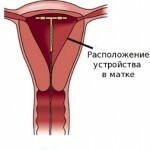 The amount of blood with monthly can increase after the installation of the intrauterine device. For 2-3 cycles this is considered a normal sign of the body's addiction to a foreign body. If the increase in the volume of secretions lasts longer, is accompanied by other uncomfortable sensations, it is possible that the spiral traumatizes the walls of the uterus. Contraceptive device must be removed.
The amount of blood with monthly can increase after the installation of the intrauterine device. For 2-3 cycles this is considered a normal sign of the body's addiction to a foreign body. If the increase in the volume of secretions lasts longer, is accompanied by other uncomfortable sensations, it is possible that the spiral traumatizes the walls of the uterus. Contraceptive device must be removed.
Systemic diseases
This is a serious infection, and hereditary problems with blood coagulability. The latter case is manifested in any injury, even a simple cut in the finger. How much blood with a woman's monthly loss will depend on how quickly she will be helped. In these circumstances, it will be needed not only from a gynecologist, but also other specialists.
Every woman should learn that menstruation does not have to be torture at all. Any negative changes should be monitored and analyzed. Especially, if it's about how much blood should be with the menstruation. The volume of excretions on critical days is not only a chance of motherhood or its absence, but in some cases the ability to simply survive with timely assistance. Any doubts about the normality of the number of monthly should be resolved in the gynecologist's office.
